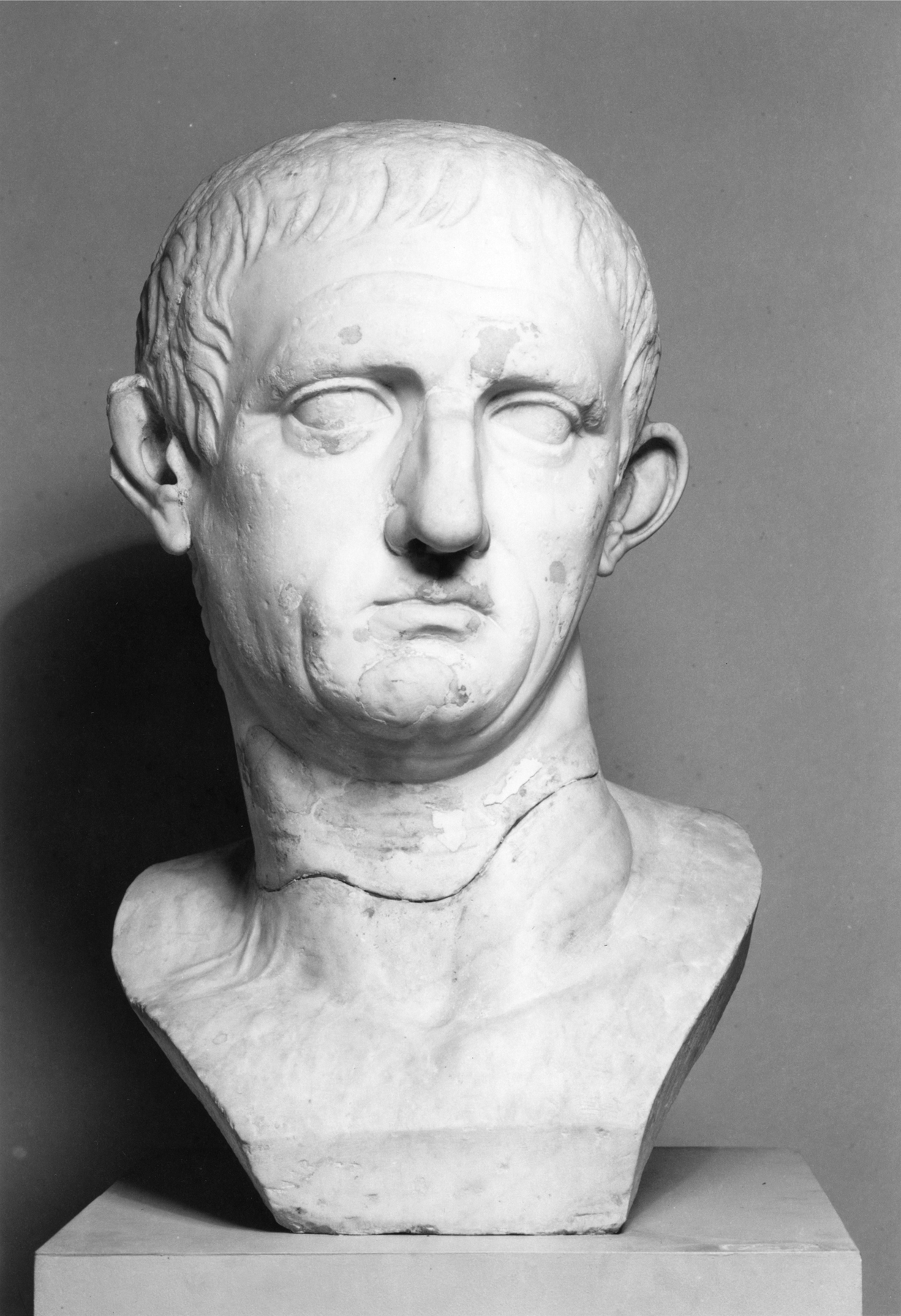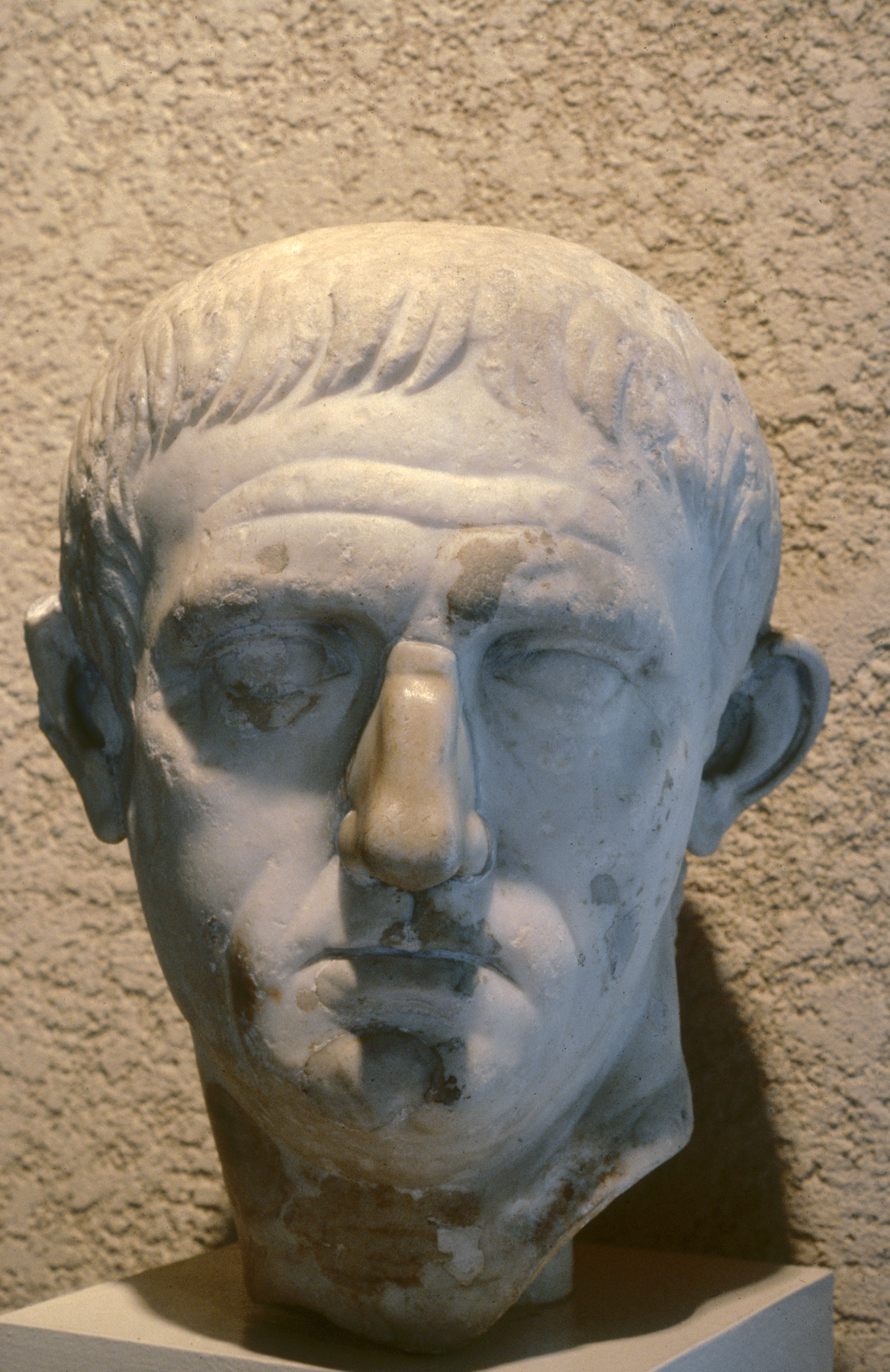Portrait of Emperor Nero, Re-Carved as Claudius
(Roman Empire )
The nose, lower lip, chin, and ears are modern restorations, but this head also shows signs of re-carving in antiquity on its cheeks and jaw. The deeply cut locks on the back of the head are characteristic of portraits of Nero and were untouched by the later artist. However, the area around the mouth has been reworked, and the deep grooves recall portraits of the emperor Claudius (ruled 41-54 CE), an elderly man when he came to power. It is likely that after Nero's unpopular rule, the portrait was re-carved to resemble his well-liked predecessor, Claudius.
Provenance
Provenance (from the French provenir, 'to come from/forth') is the chronology of the ownership, custody, or location of a historical object. Learn more about provenance at the Walters.
Don Marcello Massarenti Collection, Rome [marble no. 31], by 1894, [mode of acquisition unknown]; Henry Walters, Baltimore, 1902, by purchase; Walters Art Museum, 1931, by bequest.
Conservation
| Date | Description | Narrative |
|---|---|---|
| Technical Report | x-ray diffraction; other | |
| 6/22/1961 | Treatment | cleaned |
| 7/6/1970 | Treatment | cleaned |
| 7/5/2001 | Treatment | cleaned; loss compensation |
Geographies
Italy, Rome (Place of Origin)
Measurements
H: 27 11/16 in. (70.4 cm)
Credit Line
Acquired by Henry Walters with the Massarenti Collection, 1902
Location in Museum
Accession Number
In libraries, galleries, museums, and archives, an accession number is a unique identifier assigned to each object in the collection.
In libraries, galleries, museums, and archives, an accession number is a unique identifier assigned to each object in the collection.
23.118




